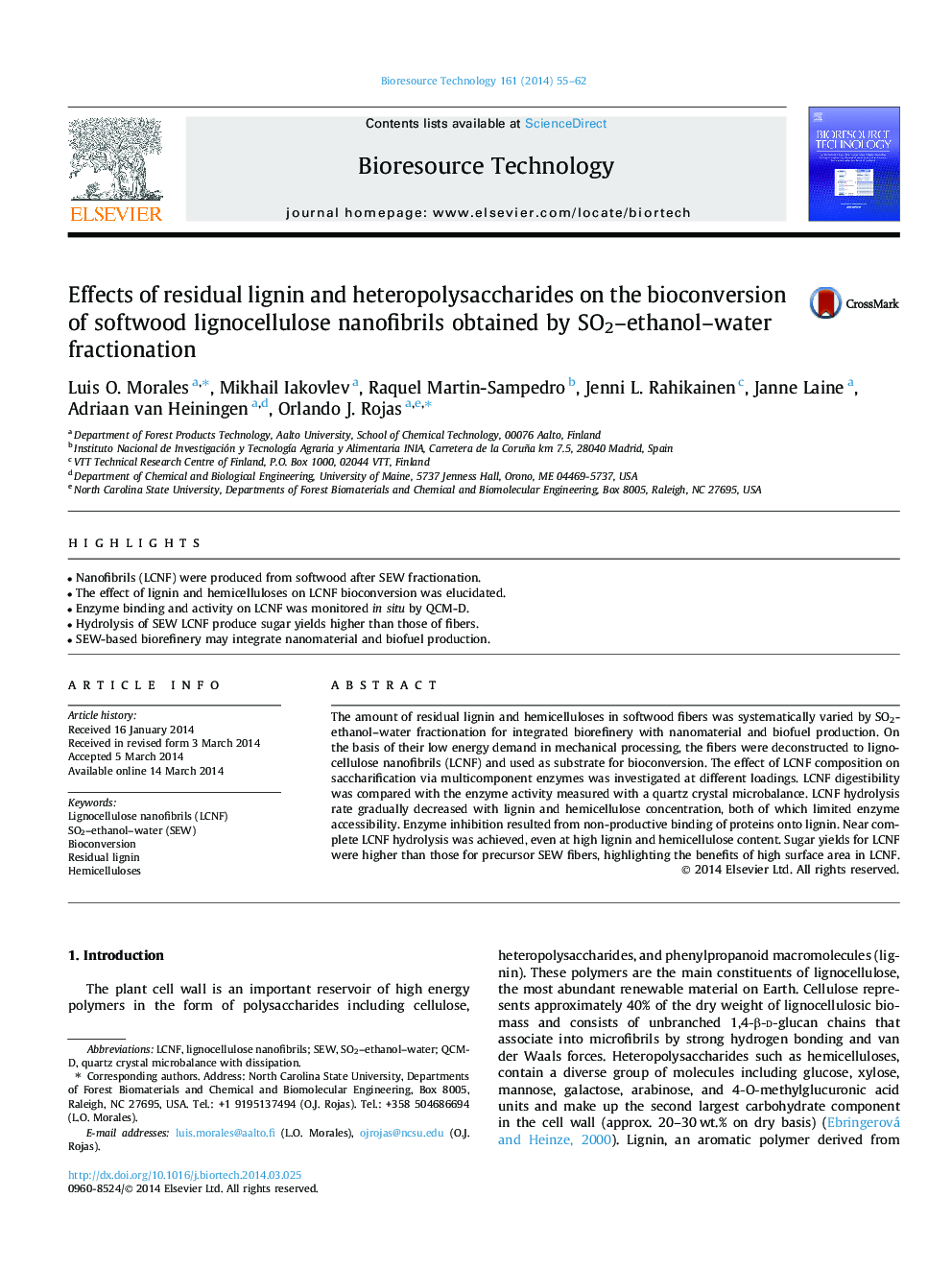| Article ID | Journal | Published Year | Pages | File Type |
|---|---|---|---|---|
| 7078464 | Bioresource Technology | 2014 | 8 Pages |
Abstract
The amount of residual lignin and hemicelluloses in softwood fibers was systematically varied by SO2-ethanol-water fractionation for integrated biorefinery with nanomaterial and biofuel production. On the basis of their low energy demand in mechanical processing, the fibers were deconstructed to lignocellulose nanofibrils (LCNF) and used as substrate for bioconversion. The effect of LCNF composition on saccharification via multicomponent enzymes was investigated at different loadings. LCNF digestibility was compared with the enzyme activity measured with a quartz crystal microbalance. LCNF hydrolysis rate gradually decreased with lignin and hemicellulose concentration, both of which limited enzyme accessibility. Enzyme inhibition resulted from non-productive binding of proteins onto lignin. Near complete LCNF hydrolysis was achieved, even at high lignin and hemicellulose content. Sugar yields for LCNF were higher than those for precursor SEW fibers, highlighting the benefits of high surface area in LCNF.
Keywords
Related Topics
Physical Sciences and Engineering
Chemical Engineering
Process Chemistry and Technology
Authors
Luis O. Morales, Mikhail Iakovlev, Raquel Martin-Sampedro, Jenni L. Rahikainen, Janne Laine, Adriaan van Heiningen, Orlando J. Rojas,
